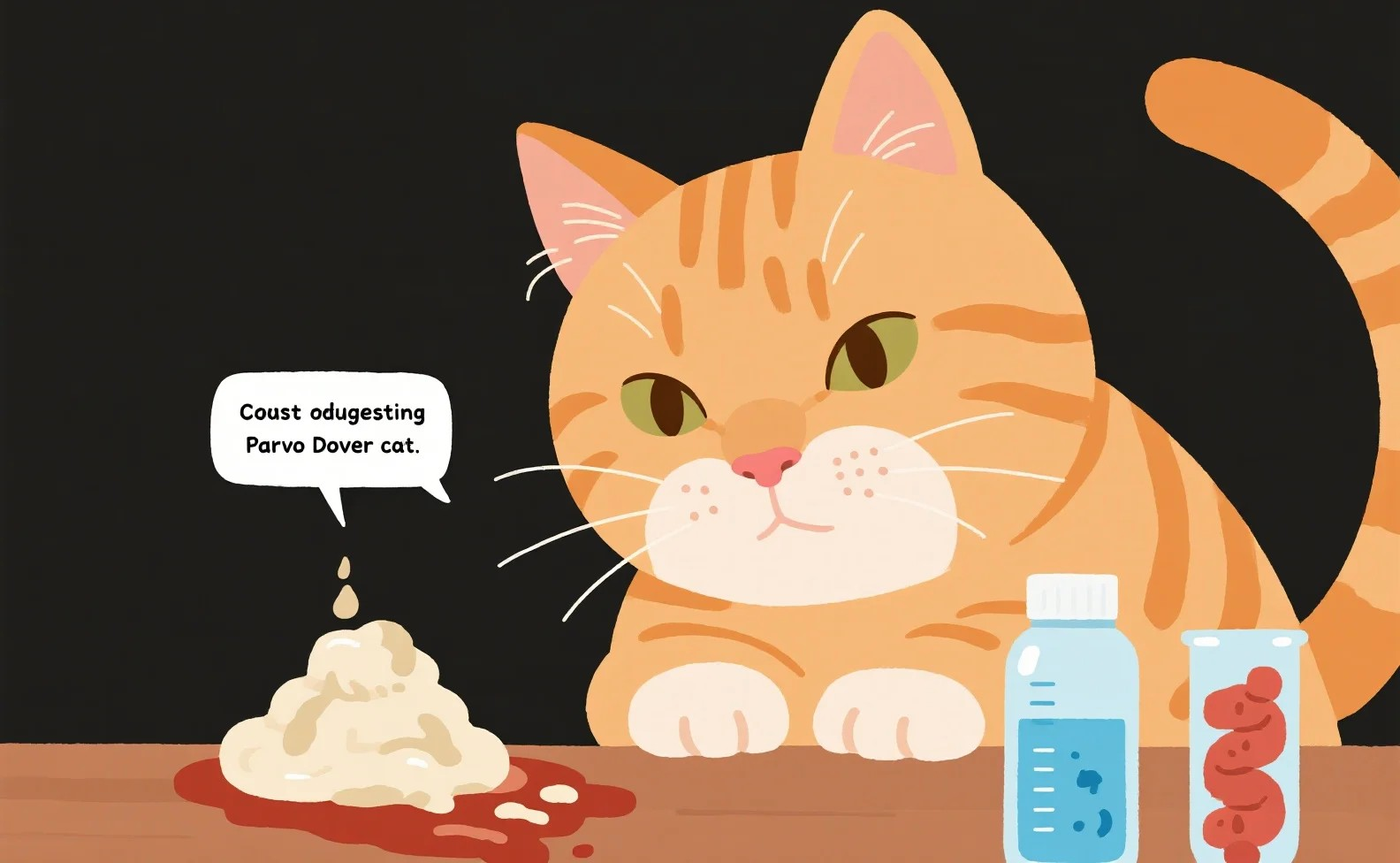Parvo, short for parvovirus, is primarily known as a significant threat to canine health, but did you know that a feline counterpart exists? Feline panleukopenia virus (FPV), commonly referred to as cat parvo, can result in severe health complications for cats of all ages. In this article, we’ll delve into the symptoms, causes, and treatment options for parvo in cats, aiming to raise awareness and promote understanding among cat owners.
What is Parvo in Cats?
Feline panleukopenia virus is a highly contagious disease that affects a cat’s gastrointestinal system. Also known as feline distemper, FPV can wreak havoc on an infected cat’s body, leading to severe health issues, particularly in young kittens. Cats of any age can contract the virus, but those who are unvaccinated or immunocompromised are at the highest risk.
Symptoms of Parvo in Cats
Recognizing the symptoms of parvo in cats is crucial for early intervention and successful treatment. The signs typically manifest within 3 to 7 days after exposure to the virus. Common symptoms include:
Vomiting: Frequent and severe vomiting is a hallmark sign of FPV. Affected cats may vomit pure bile or exhibit undigested food
Diarrhea: Cats suffering from parvo often experience watery, bloody diarrhea due to intestinal damage caused by the virus
Lethargy: As the disease takes hold, affected cats may become excessively lethargic and less responsive. This fatigue can be alarming for cat owners.
Loss of Appetite: Cats combating FPV often refuse to eat, which can further complicate their health status.
- Fever: Although not always present, many cats with parvo may develop a high fever as their body tries to fight off the infection.
If you notice these symptoms in your cat, especially after recent exposure to other animals, it’s essential to consult a veterinarian immediately.
Causes of Parvo in Cats
Parvo in cats is primarily caused by the feline panleukopenia virus, which is highly resilient and can survive outside of a host for extended periods. Here are some key points regarding the causes:
Transmission Methods: The virus can spread through direct contact with infected cats, as well as through contaminated objects like food bowls, litter boxes, and even clothing or shoes.
Environmental Resilience: FPV is particularly notorious for its ability to survive in various environments. It can remain viable in the soil, on surfaces, and even in the home for several months, making thorough cleaning and sanitation important
- Vulnerable Populations: Kittens and unvaccinated cats are more susceptible to FPV. Maternal antibodies can provide some protection to kittens, but once they wane, kittens are at a greater risk.
Understanding these causes can help cat owners take preventive measures, especially in multi-cat households or environments where cats frequently interact.
Treatment Options for Parvo in Cats
If your cat displays symptoms of parvo, immediate veterinary intervention is crucial. While there is no cure for feline panleukopenia virus, supportive care can significantly improve an infected cat’s chances of recovery. Here are some common treatment methods:
Hospitalization: Most cats diagnosed with FPV will require hospitalization to manage symptoms and prevent dehydration. This often involves IV fluids to keep the cat hydrated.
Nutritional Support: Since affected cats may refuse food, veterinarians often recommend specialized diets, sometimes through feeding tubes, to ensure they receive essential nutrients.
Medications: Veterinary professionals may prescribe anti-nausea medication to control vomiting, as well as antibiotics to prevent secondary bacterial infections that can arise due to the compromised immune system.
Isolation: Due to the highly contagious nature of FPV, infected cats should be isolated from other animals to prevent the virus from spreading.
- Vaccination: Preventive measures are key. Vaccination against feline panleukopenia is highly effective and is usually included in core vaccines administered to kittens and adult cats.
Conclusion
Understanding cat parvo, its symptoms, causes, and treatment options can make a profound difference in the lives of our feline companions. Early detection can lead to more effective treatment and a high chance of recovery. As a cat owner, ensuring your pet is vaccinated against FPV remains the best prevention strategy. If you suspect your cat has been exposed to the virus or is showing symptoms, don’t hesitate to reach out to your veterinarian for immediate assistance. Keeping our furry friends safe and healthy is a responsibility we all share, and knowledge is a powerful tool in achieving that goal.
